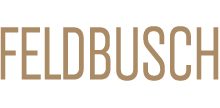«… Le trio pour flûte violon et violoncelle comprend les trois mouvements traditionnels : une partie lente entre deux parties rapides. La première partie est construite selon le schéma A-B-A. Sa partie médiane B est une variante de la première partie A, laquelle, légèrement modifiée et raccourcie, se retrouve à la fin. On obtient ainsi une unité dans le mouvement sans répétition inutile.
La deuxième partie — Très lente – est un lied, également en trois parties dont la médiane se présente en contraste aux autres en raison d’un tempo un peu plus rapide. Après une entame très brève, elle se déroule jusqu’à la fin en suivant un code dans lequel se retrouve le rythme de la partie médiane. Ici donc apparaît à nouveau l’utilisation économique de la médiane afin d’obtenir un résultat d’une efficacité maximale.
Le dernier mouvement – Allegro ben ritmico – se compose de quatre parties, où, dans la quatrième, apparaissent de nouveau les éléments de la première. Il faut remarquer la grande diversité rythmique dans un thème mouvant auquel il a déjà été souvent recouru. » ( E. Mousset, commentaires introductifs repris sur le disque ALPHA BDM-F 215)
« Het Trio voor Fluit, viool en cello bevat de drie traditionele delen : een langzaam deel tussen twee snelle delen. Het eerste deel –Allegro – is volgens het schema A-B-A opgebouwd. Hierin is het middendeel B niet anders dan een variant op het eerste deel A, wat aan het einde licht gewijzigd en verkort terugkeert. Zo wordt een eenheid in de beweging verkregen zonder nodeloze herhaling.
Het tweede deel – Zeer Langzaam – is een lied, eveneens in driedelige vorm, waar in het middendeel contrasteert vanwege een wat sneller tempo; na een korte frase, die het begin oproept, loopt het tweede deel ten einde met een coda, waarin men het ritme uit het middendeel terugvindt. Hier treedt dus weer het zelfde economiche gebruik van het midden op, ten einde een maximaal doeltreffend resultaat te bereiken.
Het laatste deel –Allegro ben ritmico – bestaat uit vier delen, waar in het vierde deel de bestanddelen van het eerste opnieuw verschijnen. Opmerkelijk is in dit deel de grote ritmische verscheidenheid in een wisselend tempo, waarop reeds eerder gewezen werd.(E, Mousset)”
“The trio for flute, violin and cello comprises the traditional three movements: a slow movement between two faster ones. The first movement is constructed using an A-B-A scheme. Its middle part B is a variation on the first part A, which, slightly modified and shortened, is rediscovered at the end. This gives unity within the movement without pointless duplication.
The second movement – very slow – is a lied, also in three parts, the middle one of which presents a contrast to the others because of its slightly faster tempo. After a very brief opening, it continues until the end following a code in which is found the rhythm of the middle part. So here again we see the sparing use of the middle part to obtain a result with maximum efficiency.
The last movement – Allegro ben ritmico – consists of four parts, and in the fourth, the elements from the first one reappear. Note the great rhythmic diversity in a moving theme to which he has often already returned.” (E. Mousset, introductory comments included on the disk ALPHA BDM-F 215)
Création par le Trio G. Dumortier, édition de disque par ce même Trio
Extrait – uittreksel – extract mouvements 1,2 et 3

